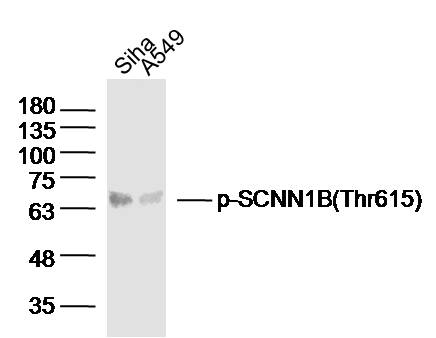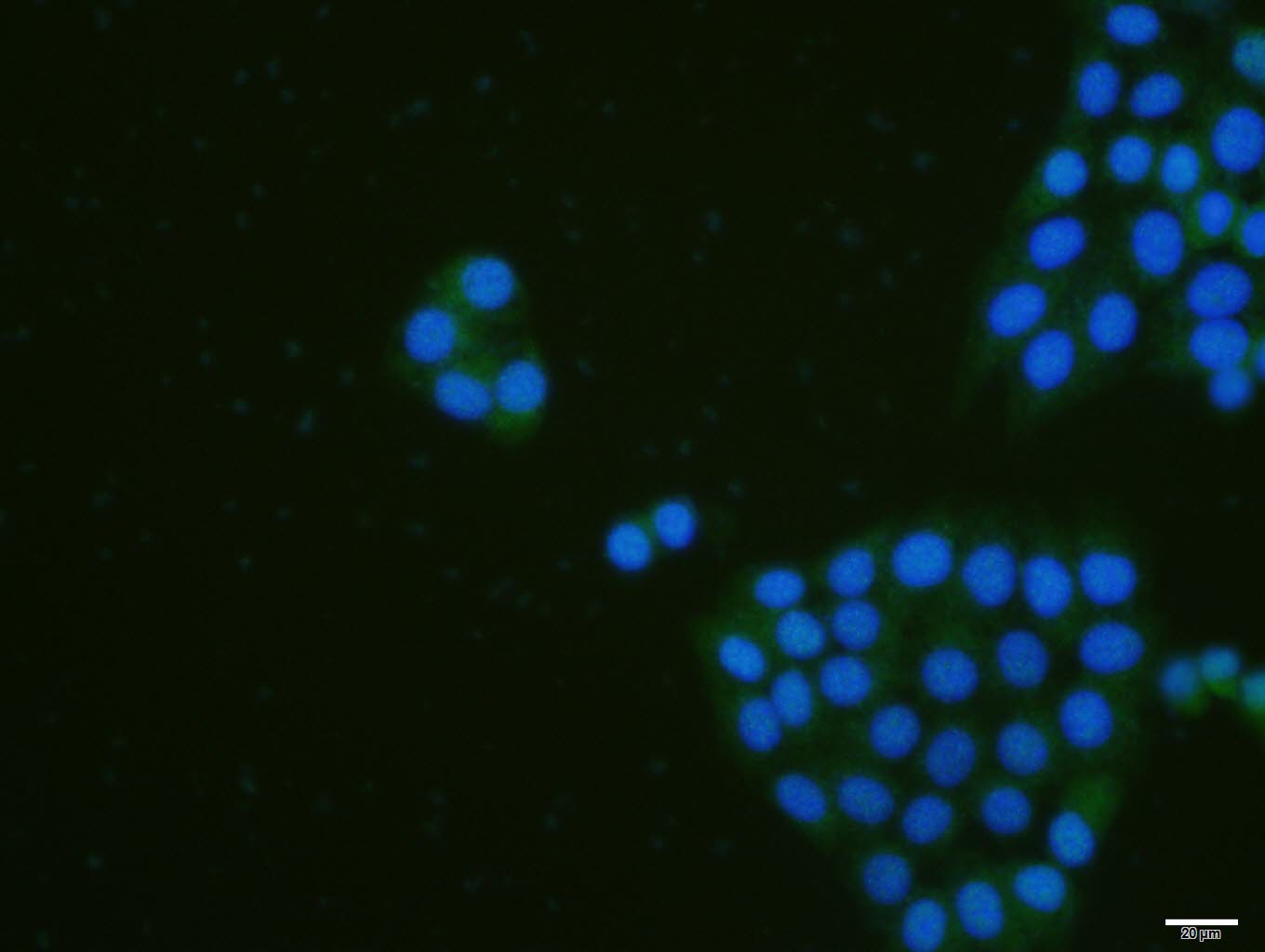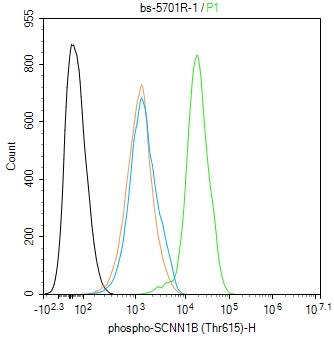
Rabbit Anti-phospho-SCNN1B (Thr615)antibody
SCNN1B(phospho Thr615); SCNN1B(phospho T615); Amiloride sensitive sodium channel subunit beta; Beta NaCH; ENaC beta; ENaCB; Epithelial Na(+) channel subunit beta; Epithelial Na+ channel beta subunit; Epithelial Na+ channel subunit beta; Epithelial sodium
View History [Clear]
Details
Product Name phospho-SCNN1B (Thr615) Chinese Name 磷酸化上皮钠通道β2抗体 Alias SCNN1B(phospho Thr615); SCNN1B(phospho T615); Amiloride sensitive sodium channel subunit beta; Beta NaCH; ENaC beta; ENaCB; Epithelial Na(+) channel subunit beta; Epithelial Na+ channel beta subunit; Epithelial Na+ channel subunit beta; Epithelial sodium channel beta 2 subunit; Epithelial sodium channel beta 3 subunit; Nonvoltage gated sodium channel 1 beta subunit; Nonvoltage gated sodium channel 1 subunit beta; SCNEB; SCNN 1B; SCNNB_HUMAN; Sodium channel nonvoltage gated 1 beta (Liddle syndrome); Sodium channel nonvoltage gated 1 beta. Product Type Phosphorylated anti Research Area Tumour immunology Neurobiology Channel protein Cell Surface Molecule Immunogen Species Rabbit Clonality Polyclonal React Species Human, (predicted: Mouse, Rat, Dog, Cow, Horse, Rabbit, Guinea Pig, ) Applications WB=1:500-2000 ELISA=1:5000-10000 IHC-F=1:100-500 Flow-Cyt=1ug/Test ICC=1:100 IF=1:100-500 (Paraffin sections need antigen repair)
not yet tested in other applications.
optimal dilutions/concentrations should be determined by the end user.Theoretical molecular weight 73kDa Detection molecular weight 95-100/65-75 kDa Cellular localization The cell membrane Form Liquid Concentration 1mg/ml immunogen KLH conjugated Synthesised phosphopeptide derived from human SCNN1B around the phosphorylation site of Thr615: PG(p-T)PP <Cytoplasmic> Lsotype IgG Purification affinity purified by Protein A Buffer Solution 0.01M TBS(pH7.4) with 1% BSA, 0.03% Proclin300 and 50% Glycerol. Storage Shipped at 4℃. Store at -20 °C for one year. Avoid repeated freeze/thaw cycles. Attention This product as supplied is intended for research use only, not for use in human, therapeutic or diagnostic applications. PubMed PubMed Product Detail SCNN1B is a subunit of the epithelial sodium channel, ENaC. ENac has high sodium selectivity, low conductance, and amiloride sensitivity. The functional channel of ENaC is composed of at least 3 subunits, alpha (SCNN1A), beta (SCNN1B), and gamma (SCNN1G). The 3 subunits show sequence similarities to one another, indicating descent from a common ancestral gene. Each encodes a protein containing 2 transmembrane domains, with intracellular amino and carboxyl termini.
Function:
Sodium permeable non-voltage-sensitive ion channel inhibited by the diuretic amiloride. Mediates the electrodiffusion of the luminal sodium (and water, which follows osmotically) through the apical membrane of epithelial cells. Controls the reabsorption of sodium in kidney, colon, lung and sweat glands. Also plays a role in taste perception.
Subunit:
Probable heterotrimer containing one alpha, one beta and one gamma subunit. A delta subunit can replace the alpha subunit. Interacts with the WW domains of NEDD4, NEDD4L, WWP1 and WWP2. Interacts with the full length immature form of PCSK9 (pro-PCSK9).
Subcellular Location:
Apical cell membrane; Multi-pass membrane protein. Note=Apical membrane of epithelial cells.
Post-translational modifications:
Phosphorylated on serine and threonine residues (By similarity).
DISEASE:
Pseudohypoaldosteronism 1, autosomal recessive (PHA1B) [MIM:264350]: A rare salt wasting disease resulting from target organ unresponsiveness to mineralocorticoids. PHA1B is a severe form involving multiple organ systems, and characterized by an often fulminant presentation in the neonatal period with dehydration, hyponatremia, hyperkalemia, metabolic acidosis, failure to thrive and weight loss. Note=The disease is caused by mutations affecting the gene represented in this entry. The degree of channel function impairment differentially affects the renin-aldosterone system and urinary Na/K ratios, resulting in distinct genotype-phenotype relationships in PHA1 patients. Loss-of-function mutations are associated with a severe clinical course and age-dependent hyperactivation of the renin-aldosterone system. This feature is not observed in patients with missense mutations that reduce but do not eliminate channel function. Markedly reduced channel activity results in impaired linear growth and delayed puberty (PubMed:18634878).
Liddle syndrome (LIDDS) [MIM:177200]: Autosomal dominant disorder characterized by pseudoaldosteronism and hypertension associated with hypokalemic alkalosis. The disease is caused by constitutive activation of the renal epithelial sodium channel. Note=The disease is caused by mutations affecting the gene represented in this entry.
Bronchiectasis with or without elevated sweat chloride 1 (BESC1) [MIM:211400]: A debilitating respiratory disease characterized by chronic, abnormal dilatation of the bronchi and other cystic fibrosis-like symptoms in the absence of known causes of bronchiectasis (cystic fibrosis, autoimmune diseases, ciliary dyskinesia, common variable immunodeficiency, foreign body obstruction). Clinical features include sub-normal lung function, sinopulmonary infections, chronic productive cough, excessive sputum production, and elevated sweat chloride in some cases. Note=The disease is caused by mutations affecting the gene represented in this entry.
Similarity:
Belongs to the amiloride-sensitive sodium channel (TC 1.A.6) family. SCNN1B subfamily.
SWISS:
P51168
Gene ID:
6338
Database links:Entrez Gene: 6338 Human
Entrez Gene: 20277 Mouse
Omim: 600760 Human
SwissProt: P51168 Human
SwissProt: Q9WU38 Mouse
Unigene: 414614 Human
Unigene: 7709 Mouse
Unigene: 9807 Rat
Product Picture
Siha (Human)Cell Lysate at 40 ug
A549 (Human) Cell Lysate at 40 ug
Primary: Anti-p-SCNN1B(Thr615)(SL5701R)at 1/300 dilution
Secondary: IRDye800CW Goat Anti-RabbitIgG at 1/20000 dilution
Predicted band size: 73kD
Observed band size: 73kD
MCF7 cell; 4% Paraformaldehyde-fixed; Triton X-100 at room temperature for 20 min; Blocking buffer (normal goat serum, C-0005) at 37°C for 20 min; Antibody incubation with (phospho-SCNN1B (Thr615)) polyclonal Antibody, Unconjugated (SL5701R) 1:100, 90 minutes at 37°C; followed by a conjugated Goat Anti-Rabbit IgG antibody at 37°C for 90 minutes, DAPI (blue, C02-04002) was used to stain the cell nuclei.Blank control(black line):Hela.
Primary Antibody (green line): Rabbit Anti-phospho-SCNN1B (Thr615) antibody (SL5701R)
Dilution:1ug/Test;
Secondary Antibody(white blue line): Goat anti-rabbit IgG-AF488
Dilution: 0.5ug/Test.
Isotype control(orange line): Normal Rabbit IgG
Protocol
The cells were fixed with 4% PFA (10min at room temperature)and then permeabilized with 90% ice-cold methanol for 20 min at -20℃, The cells were then incubated in 5%BSA to block non-specific protein-protein interactions for 30 min at room temperature .Cells stained with Primary Antibody for 30 min at room temperature. The secondary antibody used for 40 min at room temperature. Acquisition of 20,000 events was performed.
References (0)
No References
Bought notes(bought amounts latest0)
No one bought this product
User Comment(Total0User Comment Num)
- No comment





 +86 571 56623320
+86 571 56623320
 +86 18668110335
+86 18668110335

